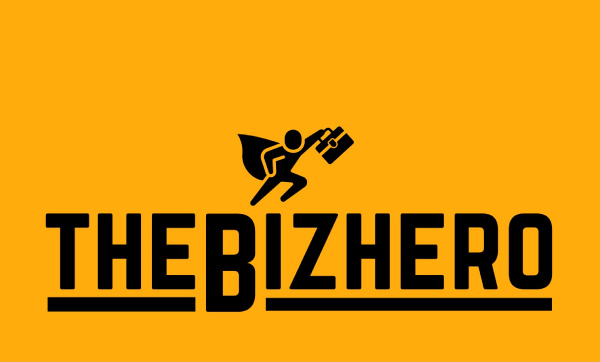
In the beginning of 2023, I had an insightful chat with an old business associate. She has been running a SME (small medium enterprise) business successfully for years but felt her business growth has reach a point of flat growth. “The competition is very tough now. What can I do in 2025 to take my business to the next level?” she asked.
As a transformation enabler, I have been thinking this question ever since. Today’s marketplace is definitely more dynamic; consumer expectations are changing, digital transformation is accelerating, and gaining attention in a crowded marketplace is harder than ever. Businesses that thrive are those that is agile and can adapt quickly and adopt proven, forward-thinking strategies.
After researching expert insights, I uncovered five proven hacks for driving business growth in 2025. These actionable approaches aren’t groundbreaking or revolutionary, but they’re often overlooked. Let’s explore how businesses can implement them effectively and stay ahead.
Contents
1. Leverage the “Attention Economy”
To start, we can all agree that when doing business, we need the attention of our targeted customers. Without attention to the business brand, your business will have limited reach. Similar to the analogy of investing in property, where “location, location and location” matters on the property valuation. The same can be said for running a business, where “attention, attention, and attention” matters significantly to a business brand.
Hence, we are now in the “attention economy,” and it is reshaping how businesses market themselves. In simple terms, businesses today are competing not just against each other but for a share of customers’ limited attention spans or some may call them “mindshare”.
One of the best Marketing gurus, Gary Vaynerchuk sums it up perfectly:
“The most important word in business is ‘attention.’ If you don’t have someone’s attention, you can’t tell them your story.”
According to Teads & Lumen‘s research, at least 9 seconds of attention are needed to impact brand consideration and eight seconds to influence purchase intent. That’s because attention leads to visibility, visibility builds awareness, and this, in turn, drives conversions.

How to Leverage the Attention Economy
- Grab the attention of your customers every day. Stop short of spamming with product offers.
- Create short-form content: Platforms like TikTok, Instagram Reels, and YouTube Shorts dominate consumer attention. Use engaging videos to tell your brand story.
- Invest in influencer marketing: Partner with micro-influencers to tap into niche, loyal audiences.
- Master storytelling: Share authentic, relatable content that connects emotionally with your audience.
Pro Tip: Track customer engagement metrics like impressions, click-through rates, and time spent on content to see where attention converts to action.
2. Be Authentic to Build Trust
For sure, in 2025, consumers will value authenticity more than ever. Building trust is a must for businesses. These days, consumers are savvy enough to spot fake marketing and businesses that fail to build trust risk losing market share. Authenticity is about honesty, transparency, and delivering on promises.
Howard Schultz, Starbucks’ former CEO, once said:
“Trust is built with one cup, one customer, one experience at a time.”
According to the 2024 Edelman Trust Barometer Special Report, 88% of consumers say brand trust influences buying decisions. In other words, authentic branding isn’t optional—it’s an absolute must and a key competitive edge.

How to Demonstrate Authenticity
- Share real stories: Highlight your business journey, struggles, and successes to humanize your brand.
- Share behind the scenes: Behind the scenes is also a great way to humanize the brand. People love how products or services are made.
- Be transparent: Be open about company practices, SLA, and pricing. Honesty resonates and builds confidence in consumers.
- Lead with values: Align your business with causes like sustainability or ethical manufacturing—and back it up with real action.
Case Study: Brands like Patagonia have built unwavering customer loyalty by staying true to their environmental values.
Pro Tip: Audit your messaging. Ensure your voice sounds genuine, relatable, and customer-focused.
3. Be Responsive to Grow Mindshare
In the digital age, customers expect businesses to be responsive, which has become a hygiene factor. Responsiveness is key to earning customer mindshare, whether replying to a query, engaging on social media, or solving a problem quickly. Although this may present key challenges to some small businesses due to limited resources or bandwidth, the business impact will outweigh the challenges in the long run.
Jeff Bezos, Amazon’s founder, said:
“We see our customers as invited guests to a party, and we are the hosts. It’s our job every day to make every important aspect of the customer experience a little bit better.”
A case study by Bain & Company found that businesses prioritizing fast, quality customer responses lead to 60% higher customer retention rates.
How to Boost Responsiveness
- Set Clear SLAs: Ensure the internal team understands the clarity of solution/resolution will help manage responsiveness effectively and have that documented clearly in SL.A
- Automate with AI tools: Use chatbots or automated systems to ensure no inquiry goes unanswered.
- Engage actively on social media: Reply to DMs, mentions, and comments to build trust and brand loyalty.
- Follow up personally: Send timely emails to show customers you value their time and feedback.
Pro Tip: Monitor your average response time and aim to improve it. Responsiveness builds loyalty and credibility.
4. Take Care of Existing Customers
Too often, businesses focus on acquiring new customers while ignoring their most valuable asset: existing customers. Business needs to be reminded that the cost of a lead generating business from new vs. the cost of lead generating business from existing clientele is much higher. Studies have also backed it up and show that retaining customers is far more profitable than attracting new ones.
Sam Walton, founder of Walmart, emphasized:
“The goal as a company is to have customer service that is not just the best, but legendary.”
According to Harvard Business Review, increasing customer retention rates by just 5% can boost profits by 25-95%. Loyal customers buy more, refer more, and cost less to retain.
How to Retain Your Best Customers
- Launch loyalty programs: Offer rewards, discounts, or exclusive deals for repeat customers.
- Regular Engagement: Drive regular engagement through regular customer visits or newsletter engagement to update customers on industrial news, product updates, etc
- Personalize your outreach: Use CRM tools to send personalized recommendations and thank-you notes.
- Act on feedback: Regularly seek customer input and improve based on their suggestions.
Case Study: Zappos became famous for its customer-first approach, turning buyers into lifelong brand advocates.
Pro Tip: Focus on delivering value to existing customers. Loyal clients often drive exponential growth.
5. Hire the Right People for Your Business
Behind every successful business is a great team. Hiring the right talent isn’t just about skills—finding people who align with your business culture, values, and goals. Of course, getting the right people is always the most challenging part for any business owner or management team. This is because, for every good, talented person out there, there will be other businesses competing for them.
Steve Jobs once said:
“It doesn’t make sense to hire smart people and then tell them what to do; we hire smart people so they can tell us what to do.”
McKinsey research indicates that companies that put talent at the center of their business strategy realize higher total shareholder returns than their competitors.
How to Hire for Growth
- Constant Hiring Mode: Businesses can be in constant hiring mode to look for the right talent on the horizon, and it is not wise just to wait for the need to arise.
- Prioritize cultural fit: Hire people who share your company’s values and long-term vision.
- Offer growth opportunities: Employees stay where they feel valued, challenged, and supported.
- Build your employer brand: Showcase why your company is a great workplace (flexibility, purpose-driven culture, etc.).
Pro Tip: Don’t just hire for today—hire for the future. Build a team that can innovate and adapt as your business grows.
Final Thoughts: 2025 is About Adaptation and Action
To grow in 2025, to repeat the same thing done in 2024 will not result in growth. The strategies that worked yesterday may not work tomorrow, especially in this era of technology and digital disruption. Success will go to businesses that leverage the attention economy, prioritize authenticity, respond faster, nurture existing customers, and hire the right talent.
These proven business hacks aren’t magic bullets—but they are powerful, actionable principles that can transform your growth trajectory.
What will you implement first? Share your thoughts below, and let’s make 2025 a game-changing year for your business!

